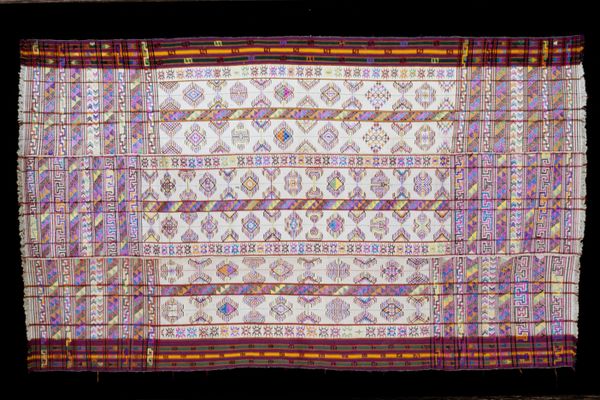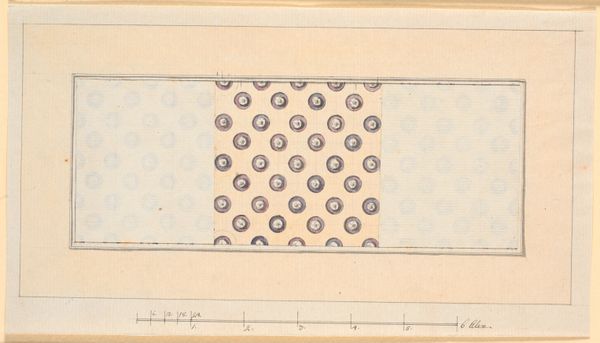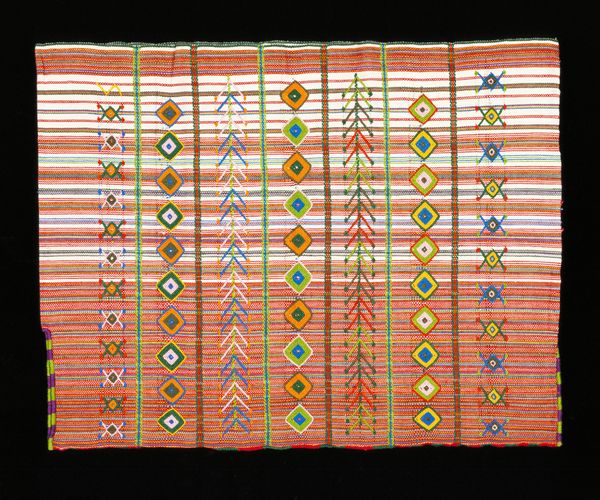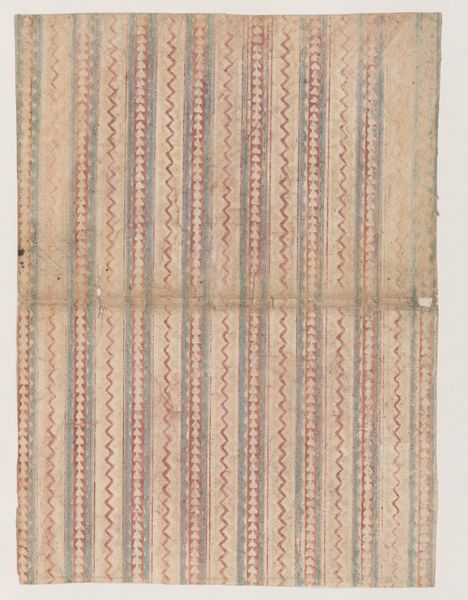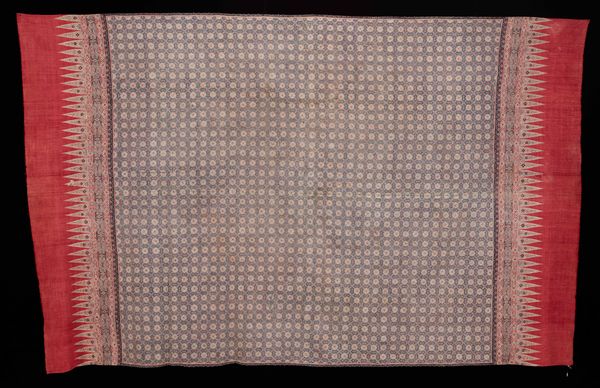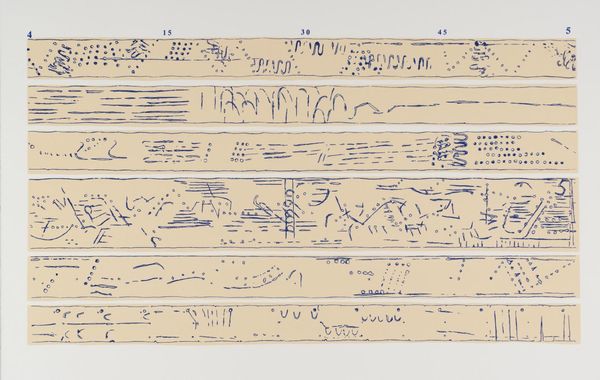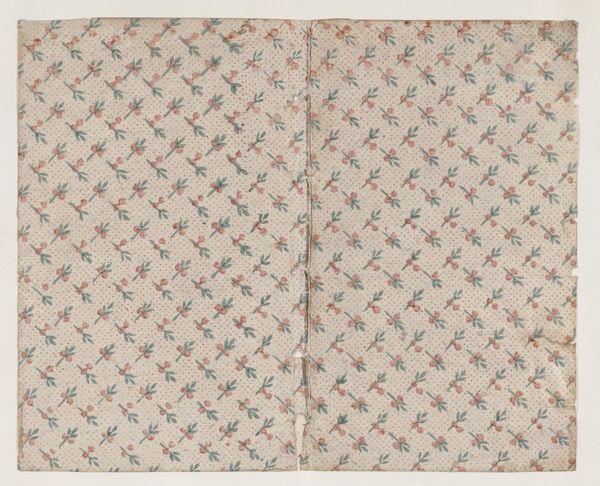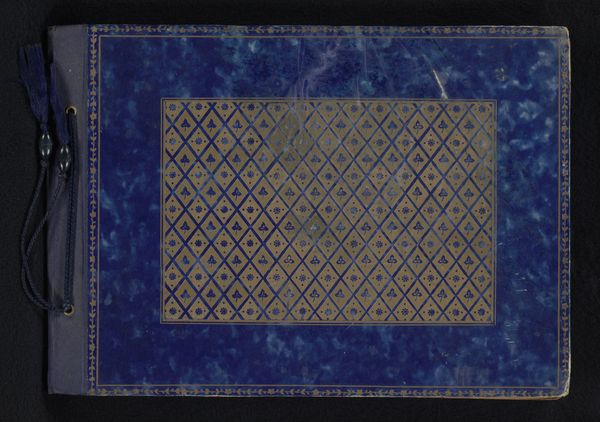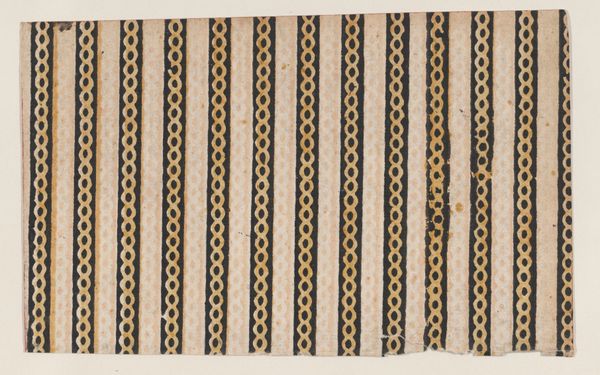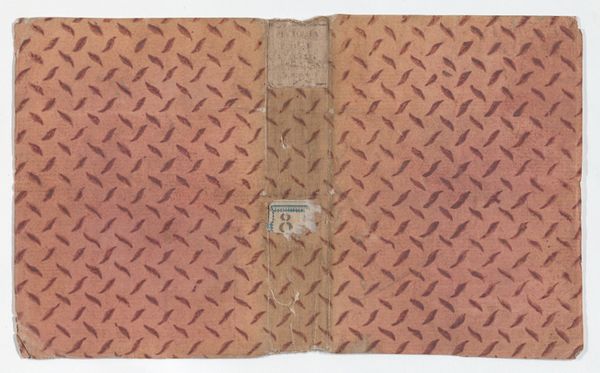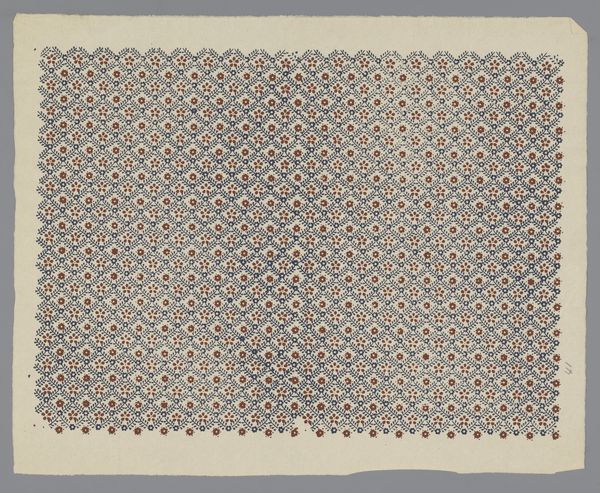
weaving, textile
#
weaving
#
textile
#
geometric
Dimensions: 92 x 50 in. (233.68 x 127 cm)
Copyright: Public Domain
Curator: This is "Kira," an eye-catching textile piece dated circa 20th century, now residing here at the Minneapolis Institute of Art. The materials employed are cotton and silk, exhibiting meticulous weaving techniques. Editor: It's striking how calming this weaving feels despite the complexity of the pattern work. The geometric figures layered with stripes of cotton and silk almost produce a mesmerizing quietude. Curator: Indeed. Considering its context within the Pattern and Decoration movement, this work challenges the conventional hierarchy that relegated textile art to craft, disrupting patriarchal art histories that have consistently marginalized artistic production created outside of Western cultural and art world establishments. Editor: Absolutely. It seems the choice of imagery contributes greatly. Diamond shapes repeat alongside triangles; the diamond so often signals potential, cycles of life, even resilience, especially within various diasporic traditions of weaving and needlework, almost as though each careful stitch becomes a form of prayer. Curator: The geometric patterning further lends itself to commentary on the political dimension inherent in textile production itself, given that textiles, from rugs to clothing, are integral components of global economies marked by unequal labor practices. The anonymity of its creation adds an additional layer to this political undertone. Editor: Anonymity… I find myself wondering about the many hands that have labored similarly over geometric designs. It recalls not only the maker, but a collective spirit embodied in the continuous creation and recreation of symbol. A common visual language, if you will. Curator: Yes, a reclaiming of value and power in these culturally laden "craft" practices long relegated to women, persons of color, and laborers deemed less valuable in capitalist economic structures. It insists upon a paradigm shift in art consumption and demands a conscious recognition of art's connection to cultural heritage and contemporary critical thought. Editor: Looking closely, I begin to see the small inconsistencies in its pattern, almost purposefully left visible to remind the viewer of this hand. As an object of aesthetic pleasure, its effect lies not just within a single viewing, but its embodiment of something continuous through human action and making. Curator: Precisely. This subtle statement through labor serves to rewrite a traditionally linear view of progress. Editor: Thank you. This deepens my appreciation greatly. Curator: Likewise, I now observe within it how it also reflects historical processes.
Comments
No comments
Be the first to comment and join the conversation on the ultimate creative platform.
